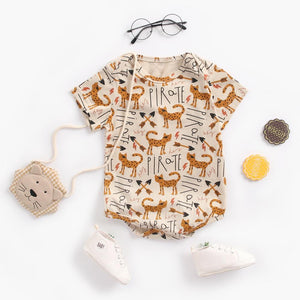The time has come to welcome your new bundle of joy into this world! You are beyond excited to meet your baby and ready to take on the gift of motherhood. You have probably read or heard about the joys and benefits of breastfeeding from other sources. That means you’ve most likely heard several times that “breastfeeding is natural; your body will know what to do and so will your baby.” However, what you may not be prepared for are the challenges associated with breastfeeding a newborn.

Generally speaking, being a first-time mother is challenging. Aside from all the challenges with learning how to care for newborn, breastfeeding can prove to be challenging as well.
There are common possible challenges associated with breastfeeding a newborn:
Cracked Nipples
The causes of cracked nipples can stem from a wide variety of sources. During my journey as a new mother, I experienced cracked nipples very early on in my breastfeeding journey with my son. I can share from first-hand experience the pain and discomfort I felt while suffering from cracked nipples. Cracked nipples oftentimes leads some mothers to their choice of discontinuing breastfeeding based on the amount of discomfort they are in. However, there are some ways to lessen the pain associated with cracked nipples as well as speed up the healing process.
Signs of Cracked Nipples:
- Noticeable bleeding and dry skin around the area of your nipples is a clear sign of cracked nipples.
What Causes Cracked Nipples:
- A common cause for cracked nipples stems from the fact that your body is simply getting used to the constant sucking of a little one. Being that your nipples have not typically been used constantly in the manner that a newborn is now using them, it is likely that your nipples will need to take time to adjust.
The cause of cracked nipples varies from mother to mother.
Remedies:
-
Nipple creams or some coconut oil are used to help heal cracked nipples. When using coconut oil, make sure you wipe off the excess oil before the baby latches again because coconut oil can cause diarrhea in some babies (like it did for my son).
-
Nipple shields are also very helpful in the healing and preventing of cracked nipples. Nipple shields help baby to get a better latch when they are a newborn and assists them in getting the motions down of stimulating the breast and withdrawing milk. Some mothers use nipple shields for months while others only use nipple shields for a few weeks. When purchasing a nipple shield, ensure you are getting the right size shield that will fit your nipple specifically. The right size can make all the difference!
- As uncomfortable as it may be, continue to have your baby latch and nurse when they are ready for a feeding. More nursing can help your breast become familiar with the motions and so your nipples will become used to the constant sucking.
- Another remedy for cracked nipples is simply allowing your breast milk to dry on your nipple. Your breast milk is like magic; let it work for your own body as well!
Cracked nipples thankfully do not last too long.
Low Milk Supply
Every mother is different and therefore produces milk differently. Some mothers experience low milk supply which can affect meeting a newborn’s needs. This can be quite discouraging to some mothers and reasonably so when you fear that your newborn is not receiving adequate nutrients. Before mothers take the plunge to end their breastfeeding journey due to low supply, consider trying some remedies to boost your supply and increase the nutrients your baby will need.
Signs of Low Milk Supply:
- Low diaper output from a newborn.
- Baby not showing signs of contentment or being full after feedings.
- Baby losing weight.
What Causes Low Milk Supply:
- The most common reason for low milk supply is associated with baby not feeding frequently enough. Breastfeeding is a supply and demand relationship that needs to be established early on in order to signal your body to know how much milk needs to be produced. If the newborn is not feeding frequently, your body does not know to make more milk.
Remedies:
-
Some suggestions to increase breast milk supply include taking supplements such as Fenugreek and other edibles such as lactation cookies (always consult your doctor before introducing supplements into your diet).
- Breastfeeding a baby also requires an increase in calorie intake so a change in diet can also be beneficial to increasing supply. Be sure you are introducing the good calories into your diet!
-
Wearing the appropriate bra can make a difference as well. If you are wearing bras or sports bras that are too constricting for the breasts, this added pressure can cause a decrease in your milk supply. Consider using a nursing bra or nursing camisole for proper support while breastfeeding.
- Increasing your water intake helps to increase your supply as well. Staying hydrated is key while breastfeeding.
- If you have the time, also try pumping between feeding sessions in order to signal your body to produce more milk. As previously stated, breastfeeding is a supply and demand relationship. So, if baby and pump are demanding the milk, your body will learn to supply more milk.

Difficulty Latching
As natural as breastfeeding is, there are some areas of trial and error both on the mother’s part and on the baby’s. For babies, this is their first time learning to latch appropriately in order to stimulate and draw out the milk. It is understandable that a baby would become frustrated when they are also unsure of how to receive nutrients. Latching difficulty is a problem many mothers see and the causes are not always so obvious.
Signs of Difficulty Latching:
- Baby appears frustrated at the breast.
- Mother is not seeing evidence of milk escaping the corners of baby’s mouth.
- Mother is experiencing pain when baby is trying to latch.
What Causes Difficulty Latching:
- A common cause of having difficulty latching is when the baby is hesitant to latch. This could be due to having a bad experience from their first time latching or just being unsure of what they need to do in order to properly withdraw milk from the breast.
Remedies:
- Skin-to-skin contact with baby is recommended to assist baby in latching. This helps baby to feel comfortable with the person he/she knows best (Mommy!) and helps your body prepare for feedings.
- Repositioning baby to a more relaxed position and letting baby take the lead on feeding is also helpful.
- It is also advised to see a lactation consultant who can assist you with getting baby to latch. Lactation consultants can help you find that perfect nursing position that keeps you and baby comfortable and on the road for a successful breastfeeding journey.
Around the Clock Feedings
In addition to you recovering from childbirth, there is also the challenge of constant feeding sessions that you will find yourself performing. It is normal for babies to feed 8-12 times per day, and some babies might even do a little more. This means that on average, you have a newborn feeding approximately every two hours. This doesn’t leave much room for sleep in your schedule. Hang in there, Mama!

Signs of Around the Clock Feedings:
- The number one sign is obvious- you are literally breastfeeding your newborn constantly.
What Causes Around the Clock Feedings:
- A newborn’s stomach is extremely small. Therefore, the amount of milk needed per feeding is also small. However, that small stomach digests the milk quickly as your baby grows and burns calories rapidly. This causes the baby to become hungry quicker and makes it seem as though all you are doing is nursing your little one. This adds to the sleep deprivation you are already experiencing and can become frustrating.
Remedies:
- It is not advisable to have “scheduled feedings” as this can negatively impact your milk supply. But, soon enough, you will begin to get into a groove of knowing when your baby is hungry. In that case, try to prepare yourself for feeding before baby gets fussy. If you know that your baby is typically nursing every two hours, prepare yourself right before that two-hour mark. Begin by getting baby’s diaper changed, getting yourself comfortable, and start feeding baby. This is helpful because it gives you a sense of control instead of rushing around trying to get that diaper changed, find your nursing pillow, get comfortable, and pull out the breast all while baby is screaming for food. In order to help you get more sleep, really try to sleep when the baby sleeps. I can’t tell you how many times I heard this during the newborn stage, but it is truly something I should have done. Two hours of uninterrupted sleep is better than nothing. It is a rough road! Try to lessen the discomfort as much as possible with things that you can control.
Nipple Confusion
Nipple confusion is a problem some mothers face when they introduce a bottle to a newborn who is also being breastfed. Not all babies experience nipple confusion. There are some sources that suggest introducing a bottle earlier is best, while other sources frown against bottle introduction until the baby is a certain amount of weeks old. Nipple confusion is not always to be blamed on bottles, however. From first-hand experience, my son became frustrated when I attempted to feed him without the nipple shield when he was two weeks old. This caused him to not attempt to feed at all. He became frustrated quickly and I was forced to give him a pacifier for the time being until I was able to locate and place the nipple shield back on. Once the shield was back on, he latched perfectly and all was right in the world.
Signs of Nipple Confusion:
- Baby is fussy at the breast.
- Baby seems to reject the breast.
- Baby prefers to have the nipple from the bottle versus their mother’s nipple.
What Causes Nipple Confusion:
- Nipple confusion describes a baby’s fussiness when switching from breast to bottle and vice versa. Nipple confusion is thought to occur when breastfeeding has not yet been well established with your newborn and therefore the baby becomes confused about where to get his or her food. Some babies learn quicker than others that they don’t have to work as hard for their milk when given in a bottle. This can cause baby to have a preference for the bottle because it is less work for them in the long run.
Remedies:
- Skin-to-skin contact is helpful in the situation of nipple confusion.
- Proper positioning of the baby during breastfeeding sessions is helpful in order to make the baby comfortable enough to try to latch well.
- Hand expression is recommended to provide baby that immediate satisfaction of milk before latching so that baby understands that milk is coming from this source (the breast).
- It is also suggested to get rid of pacifiers in order to help establish breastfeeding in the event that nipple confusion has occurred.
Best Ways to Breastfeed a Newborn
When breastfeeding a newborn, it is best to do what makes mom and baby comfortable.
- I had a preference to side-nurse my son, which provided comfort to both of us especially during the night when I just wanted a little more sleep. Side-nursing includes laying down on your side while your baby is laying next to you and nursing.
-
During the day, I found myself in our rocking chair with a nursing pillow in my lap that allowed my son to be propped up in a comfortable way to nurse.
These have been the best methods I found for myself to breastfeed a newborn. However, there are other positions available to assist newborns in latching and help make Mom comfortable, too!
Important Information about Breastfeeding a Newborn
- Breastfeeding a newborn is the most natural and healthy way to nourish your newborn’s fast-growing body.
- Newborns rely on the appropriate nutrients to assist them in succeeding in meeting their milestones.
Keeping an eye on your newborn’s wet diaper output is a good indication of your baby’s intake of breast milk. If their wet diaper output is low, this could be a sign that your baby is not receiving enough milk. When in doubt, it is always advisable and best practice to talk with your child’s pediatrician in the event that you believe your baby is not getting enough breast milk. Oftentimes, a pediatrician can refer you to a lactation consultant who can perform tests such as weighted feedings or timed feedings. Lactation consultants can also provide mothers with additional materials to assist in breastfeeding their baby.










